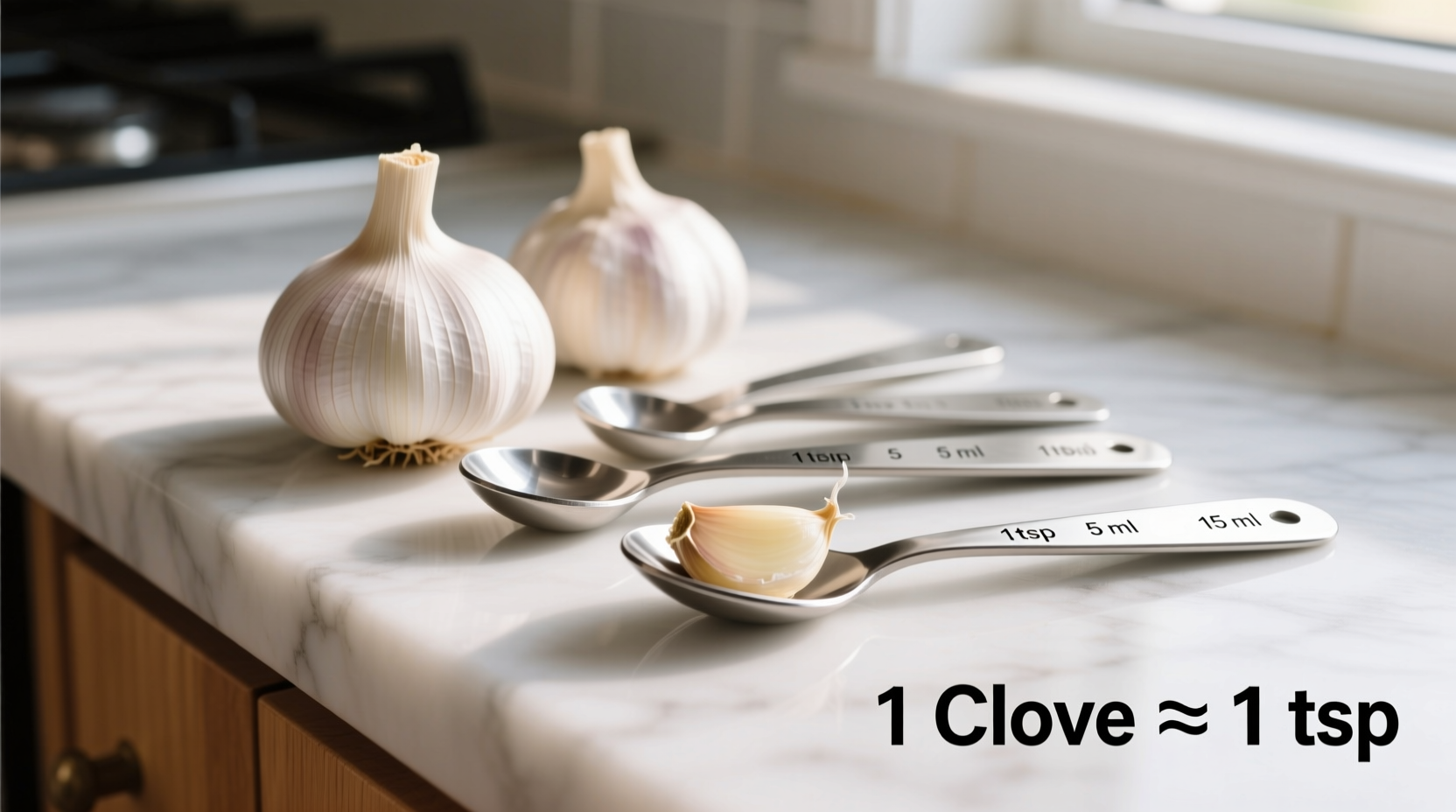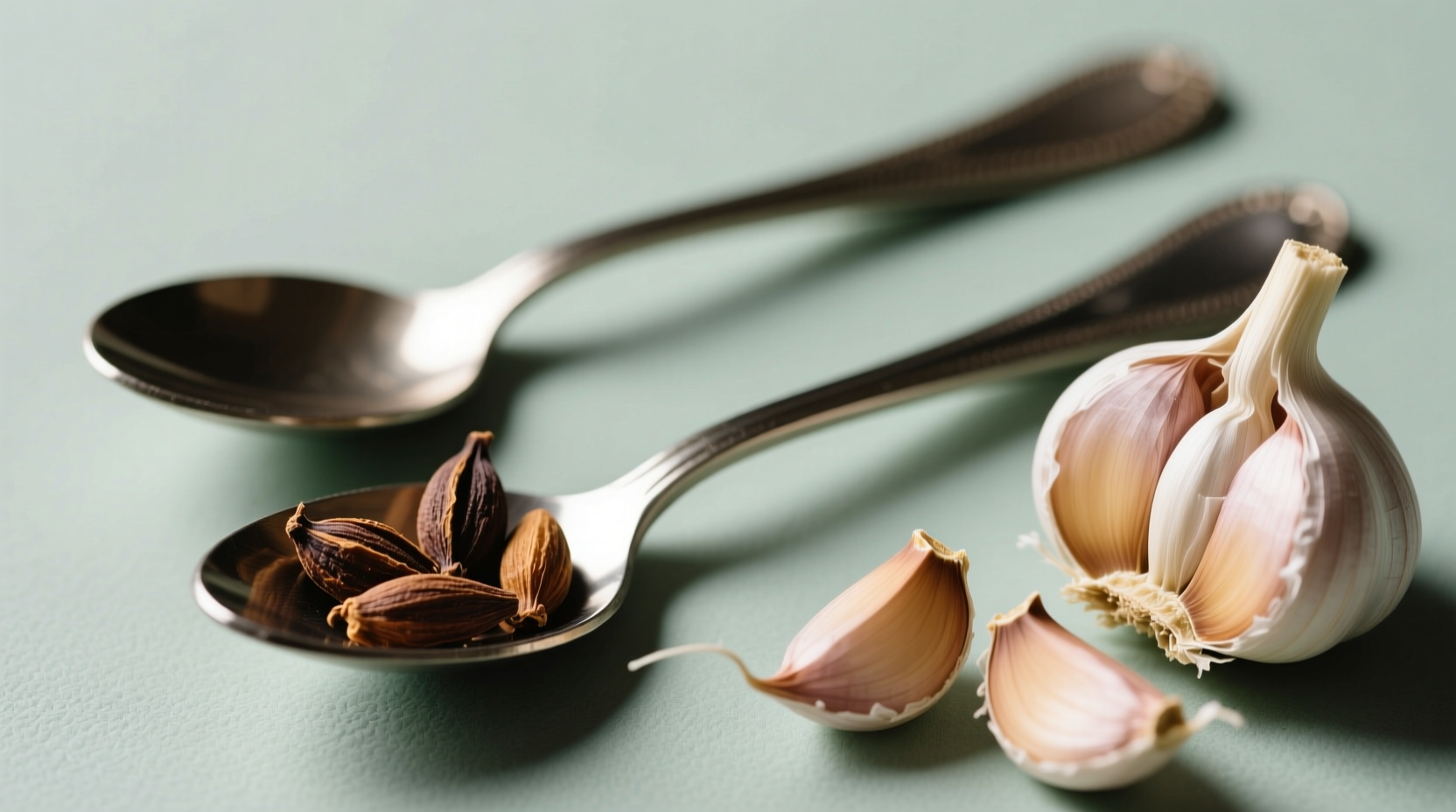Two medium garlic cloves typically equal approximately 1 teaspoon of minced garlic. However, this measurement varies based on clove size and preparation method. Small cloves may yield 1/2 teaspoon each, while large cloves can produce up to 1 1/2 teaspoons when minced.
Ever found yourself mid-recipe with garlic cloves in hand but the instructions call for teaspoons of minced garlic? You're not alone. Understanding garlic measurements prevents cooking mishaps and ensures your dishes have the perfect flavor balance. Let's break down exactly what you need to know for precise garlic conversions.
Why Garlic Measurement Matters in Cooking
Garlic's potent flavor can make or break a dish. Too little leaves recipes flat, while too much overwhelms other ingredients. Professional chefs know that accurate garlic measurement directly impacts flavor development in sauces, marinades, and sautés. The USDA's FoodData Central confirms that garlic's allicin content—responsible for its distinctive taste—varies significantly based on preparation method and quantity used.
| Garlic Size | Per Clove (minced) | 2 Cloves Equivalent |
|---|---|---|
| Small (1/2" diameter) | 1/2 teaspoon | 1 teaspoon |
| Medium (3/4" diameter) | 3/4 teaspoon | 1 1/2 teaspoons |
| Large (1" diameter) | 1 1/4 teaspoons | 2 1/2 teaspoons |
| Jumbo (1 1/4" diameter) | 1 3/4 teaspoons | 3 1/2 teaspoons (just under 1 Tbsp) |
Factors That Change Your Garlic Measurements
Three critical elements affect how many teaspoons you'll get from two garlic cloves:
1. Clove Size Variability
Garlic bulb size varies dramatically by variety and growing conditions. A single supermarket bulb might contain both small inner cloves and larger outer cloves. The USDA Agricultural Research Service documents that California Early varieties typically produce medium cloves, while Asian varieties often yield larger cloves with potentially stronger flavor compounds.
2. Preparation Method Differences
How you process garlic changes volume significantly:
- Minced: Most compact form (2 medium cloves = ~1 1/2 tsp)
- Pressed: Slightly more volume due to air incorporation (2 cloves = ~2 tsp)
- Grated: Maximum volume with fibrous strands (2 cloves = ~2 1/4 tsp)
3. Recipe Context Requirements
Not all recipes need identical garlic intensity. As noted in the Culinary Institute of America's Professional Chef textbook, Mediterranean dishes often use larger garlic quantities than Asian cuisine where garlic plays a supporting role. Always consider your recipe's cultural context when converting measurements.

Practical Measurement Techniques for Home Cooks
When your recipe specifies "2 cloves" but you're working with pre-minced garlic or vice versa, follow these professional techniques:
The Visual Assessment Method
Hold your garlic clove next to a teaspoon measure. A medium clove should fill about three-quarters of the spoon when minced. This technique works well for how to measure garlic without measuring spoons situations.
The Water Displacement Test
For precise measurement of pre-minced garlic:
- Fill a 1-teaspoon measuring spoon with water
- Pour into a small container and mark the level
- Add your minced garlic to the empty spoon
- Pour water back until it reaches the marked level
- The difference equals your garlic volume
When Substituting Pre-Minced Garlic
Store-bought minced garlic contains citric acid preservatives that slightly alter flavor. When converting how many teaspoons in 2 cloves of pre minced garlic, use 10-15% less than fresh to account for this difference. For long-cooked dishes like stews, the difference becomes negligible.
Common Recipe Applications
Understanding these conversions helps in everyday cooking scenarios:
Pasta Sauce Perfection
For a standard marinara serving four people, recipes calling for "2 cloves" typically expect 1 1/2 teaspoons of minced garlic. This provides sufficient flavor without overwhelming the tomato base. Many home cooks accidentally double this amount, creating unbalanced sauces.
Garlic Bread Proportions
When making garlic bread with two cloves per baguette half, aim for 1 1/2 teaspoons of minced garlic mixed with 4 tablespoons of butter. This creates the ideal garlic-to-butter ratio that professional chefs use for garlic bread with precise garlic measurements.
Stir-Fry Success
Asian stir-fries require quick cooking where garlic burns easily. For two cloves in stir-fry recipes, use 1 teaspoon of minced garlic added during the last minute of cooking. This prevents bitterness while delivering authentic flavor—a technique documented in multiple Culinary Institute of America demonstration videos.
Avoiding Common Garlic Measurement Mistakes
Even experienced cooks make these errors when converting cloves to teaspoons:
- Ignoring clove size variation within a single bulb
- Not accounting for preparation method differences
- Using volume measurements for roasted garlic (roasted yields less volume)
- Measuring before removing skin (adds 15-20% extra volume)
Remember that how much is 2 cloves of garlic in teaspoons depends on your specific garlic and preparation technique. When in doubt, start with less—you can always add more garlic, but you can't remove it once incorporated.











 浙公网安备
33010002000092号
浙公网安备
33010002000092号 浙B2-20120091-4
浙B2-20120091-4